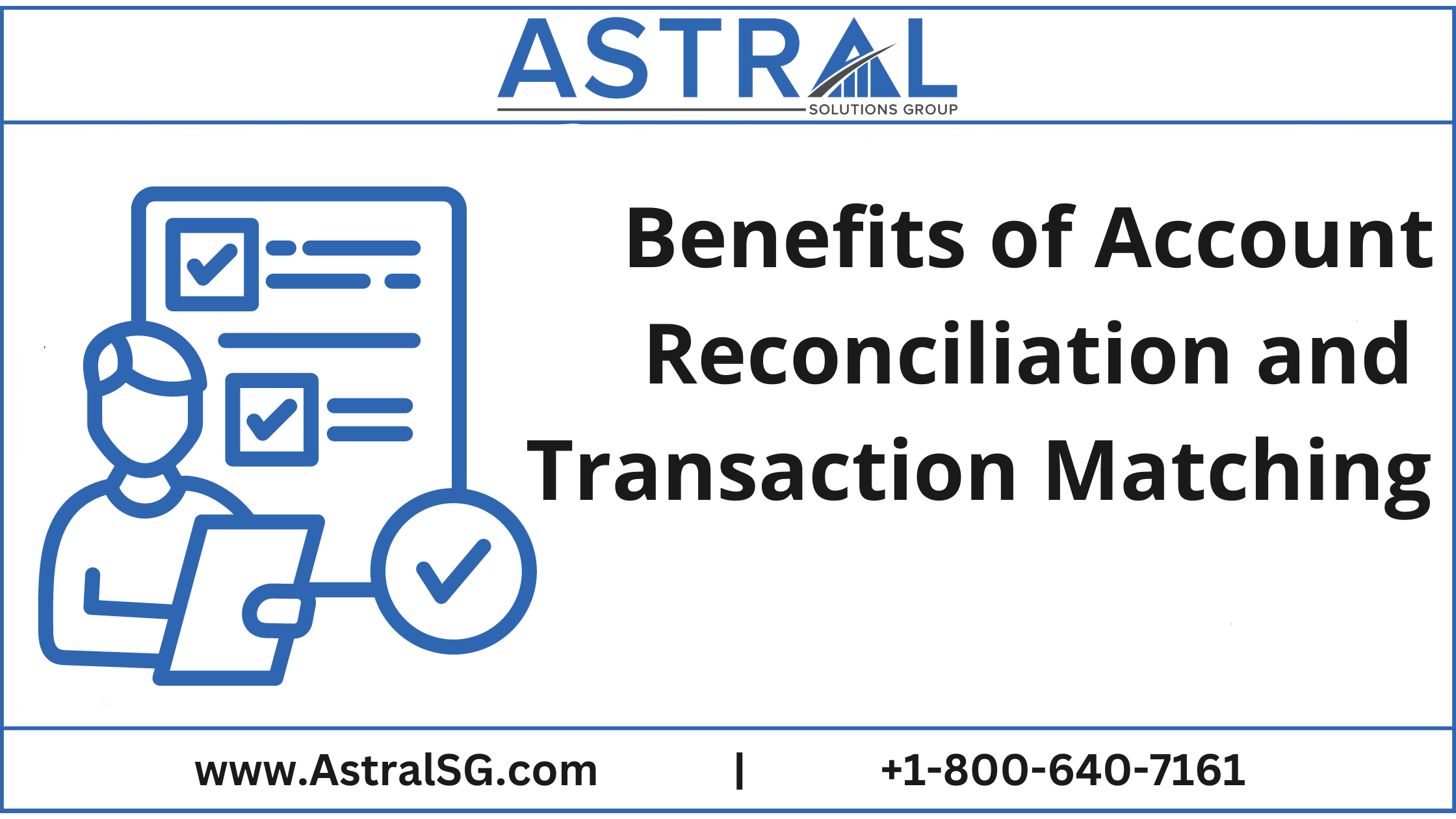
Account Reconciliation
To verify accuracy and consistency, a company’s internal financial records are compared with external data, such as bank statements, in a process known as account reconciliation. Finding and fixing errors will help to guarantee that every transaction is accurately documented. This procedure is necessary to guarantee the accuracy and dependability of the company’s financial statements, maintain the integrity of financial data, and prevent errors.
Benefits of Account Reconciliation
-
Accurate Financial Records:
Reconciliation helps to identify any discrepancies between internal financial records and external statements, ensuring that all transactions are correctly recorded. This accuracy is essential for reliable financial reporting.
-
Fraud Detection
Regular reconciliation can uncover unauthorized or suspicious transactions. Businesses can quickly detect and address potential fraud by comparing financial records with bank statements.
-
Improved Financial Management
Accurate records help businesses manage their cash flow, avoid overdrafts, and ensure that payments and receipts are correctly processed.
-
Regulatory Compliance
Account reconciliation helps businesses comply with financial regulations by maintaining accurate and up-to-date records. This is particularly important during audits or when filing tax returns.
-
Informed Decision-Making
Accurate financial data enables business leaders to make well-informed decisions based on a clear understanding of the company’s financial position.
Transaction Matching
In contrast, transaction matching involves matching and comparing transactions from many sources, including internal systems, credit card statements, and bank accounts, to ensure they match. This automated procedure facilitates the prompt detection and resolution of inconsistencies or mismatches, speeding up and streamlining the reconciliation process. Because transaction matching drastically cuts down on the time and effort needed for manual matching, it benefits businesses that handle large transactions.
Benefits of Transaction Matching
-
Efficiency and Time Savings
Automated transaction matching tools can swiftly and accurately match large volumes of transactions, decreasing the time and effort required for manual matching.
-
Error Reduction
By automatically matching transactions, businesses can minimize the risk of human error and ensure that all transactions are correctly recorded and reconciled.
-
Enhanced Accuracy
Transaction matching ensures that all transactions are accurately reflected in financial records, reducing the likelihood of discrepancies and improving overall financial accuracy.
-
Simplified Reconciliation Process
Transaction matching streamlines the reconciliation process by quickly identifying matching transactions, making it easier to reconcile accounts and identify any discrepancies.
-
Improved Financial Transparency
Accurate and consistent transaction records can help businesses achieve greater transparency in their financial operations, making tracking and reporting on financial performance simple.
-
Reduced Financial Risk
By ensuring that all transactions are correctly matched and recorded, businesses can reduce the risk of financial errors, missed payments, or unrecognized liabilities.
In summary, transaction matching automates comparing transactions across systems to improve accuracy and efficiency. In contrast, account reconciliation concentrates on guaranteeing the accuracy of financial records by comparing internal and external data. Both procedures are necessary to uphold financial transparency and facilitate good company decisions.




